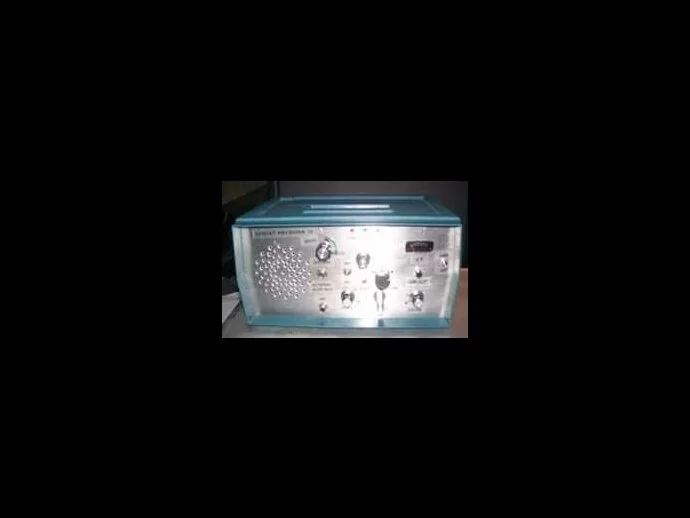EVP Evolves into the Discovery of the Ghost Box
EVP or electronic voice phenomena was discovered in the late 1950s and has become well known today thanks to numerous TV shows featuring ghost investigators using audio recorders to capture the voices of ghosts and spirits. More ghost hunters are embracing the two-way communication device called a ghost box (aka the Frank's Box). Following on the heels of the Spiricom, one of the first known, two-way communication devices used to bridge the gap between the earth realm and the spirit realm, the Frank’s Box was the first device that allowed ghost investigators to speak to the dead. Frank’s Box is a ghost box that produces random voltage to create raw, random or linear sweeping audio from an AM or FM tuner that is then amplified and sometimes fed into an echo chamber before being recorded. Ghost boxes, such as Frank’s box, create audio bits and white noise that ghosts and/or spirits can then use to bring forth words – real time two-way communication. Frank Sumption was the original inventor of the ghost box. He conceived of the idea by first experimenting with Stefan Bion’s EVPMaker software for EVP recording while also being inspired by an October 1995 Popular Electronics magazine article that asked, “Are the dead trying to communicate with us through electronic means? Try these experiments and see for yourself.” Today, Frank is still experimenting with various improvements to his ghost box design.
Today, most ghost boxes do not sweep the band randomly, but prefer linear sweeping of the AM or FM bands. That is not to say other bands, such as shortwave, weather, etc are not being experimented with by Frank and other Instrumental Transcommunication experimenters. Others since have developed their own ghost boxes, such as Paranormal System’s "MiniBox," Joe Cioppi’s “Joe’s Box” and the "PSB7 Spirit Box."
The Ghost Box: The Radio Shack Hack Discovery
In late 2007, another discovery was made by a retired electrical engineer known as Sum Duc. His find has been dubbed the “Radio Shack Hack.” Here is his story: “I was in Radio Shack looking for parts for a new type of device for ITC I’m currently working on. I saw the AM/FM 12-469 on the shelf and thought, ‘I bet I can make this work.’ I had no idea it would be so simple.”
Since that time, other researchers such as Mike Coletta have figured out how to alter the older version Radio Shack 12-470 AM/FM radio, too. Mike has posted many of his videos on YouTube to help others make their own ghost boxes. What has been great is the fact that so many have made their discoveries and research public, such as Frank Sumption, Joe Cioppi, Bruce Halliday, Steve Hultay, Sum Duc, Mike Coletta, and more. Steve Hultay has found numerous radios, over the years, that can be converted into a ghost box and still experiments as of this writing.
The ghost box can be used for EVP, as it can be recorded, then analyzed for messages from spirits and ghosts. However, what makes the ghost box unique is that it can be heard audibly through either an external speaker or headset, where responses from the other side can be heard and responded to live – not unlike chatting with someone by walkie-talkie. It does require the user to train his or her ear to hear the messages that are brought forth, as the noise and audio bits can at times be somewhat distracting. But if one experiments long enough with a ghost box, it will become apparent that the audio sound bites and white noise will begin to be manipulated to form answers to questions, phrases and more. For this reason alone, we recommend recording all sessions and listening to them later. Upon playback, one might be amazed at what is captured in the audio.
Today, there are commercial versions of the ghost box available such as the PSB-7. We believe the ghost box is here to stay thanks to Frank Sumption and others who have contributed to this unique communication device.



